| کد مقاله | کد نشریه | سال انتشار | مقاله انگلیسی | نسخه تمام متن |
|---|---|---|---|---|
| 3019717 | 1182255 | 2006 | 8 صفحه PDF | دانلود رایگان |
عنوان انگلیسی مقاله ISI
¿Cuál deberÃa ser el fármaco que se añadiera a un IECA y un bloqueador beta en la insuficiencia cardiaca por disfunción sistólica: un antagonista de la aldosterona o un ARA-II? Evidencias clÃnicas con ambos
دانلود مقاله + سفارش ترجمه
دانلود مقاله ISI انگلیسی
رایگان برای ایرانیان
کلمات کلیدی
موضوعات مرتبط
علوم پزشکی و سلامت
پزشکی و دندانپزشکی
کاردیولوژی و پزشکی قلب و عروق
پیش نمایش صفحه اول مقاله

چکیده انگلیسی
The combination of an ACE inhibitor and a beta blocker is the key first line treatment for patients with chronic heart failure (CHF) and left ventricular systolic dysfunction (LVSD), as well as patients with heart failure, LVSD or both after acute myocardial infarction (AMI). Adding an angiotensin receptor blocker (ARB) to an ACE inhibitor gives further benefit In NYHA class II-IV CHF. In the case of AMI, there is no benefit from adding an ARB. Adding an aldosterone antagonist (AA) reduces mortality in NYHA class III and IV CHF and in patients with LVSD and symptoms of heart failure or diabetes after AMI. Controversy therefore only arises when considering the choice of a third agent for patients with systolic CHF who are in NYHA class III where adding either an ARB or an AA is justified. Unfortunately, no trial has compared an ARB and AA in this situation and none is currently planned, though a trial with an AA in patients with NYHA class II systolic CHF is. We have a choice, but one or other agent should be added. Often the choice of drug will be dictated by patient tolerability.
ناشر
Database: Elsevier - ScienceDirect (ساینس دایرکت)
Journal: Revista Española de CardiologÃa Suplementos - Volume 6, Issue 3, 2006, Pages 29C-36C
Journal: Revista Española de CardiologÃa Suplementos - Volume 6, Issue 3, 2006, Pages 29C-36C
نویسندگان
Gareth Padfield, John J.V. McMurray,